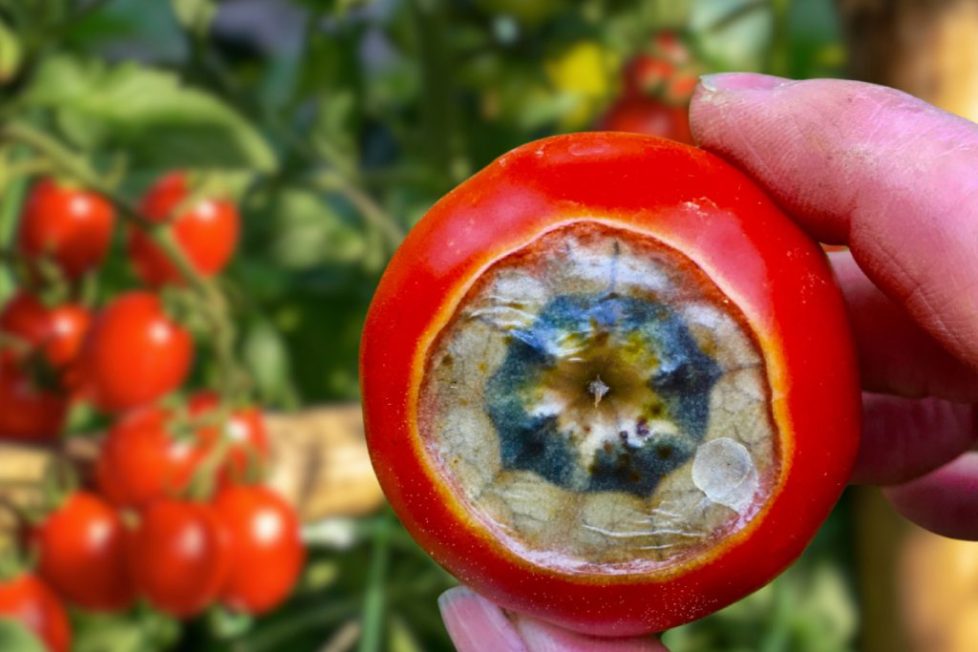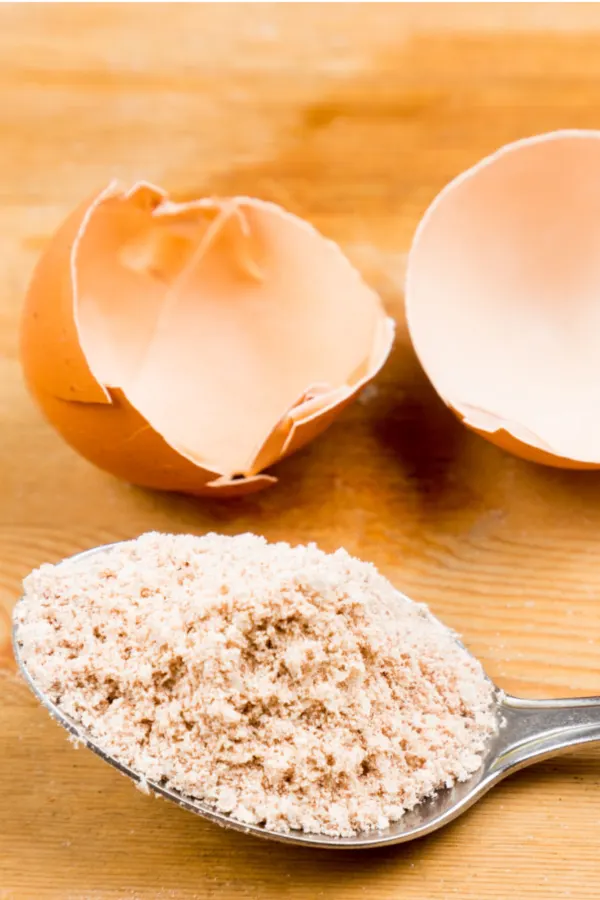What To Do If Your Tomatoes Have Blossom End Rot – How To Save Your Tomatoes!


Wondering what to do if your tomatoes have blossom end rot? Or perhaps your peppers do as well?
There is nothing more discouraging to a gardener than to watch their seemingly healthy tomato plants start to produce tomatoes with end rot. Not only is unsightly, it can all but ruin the tomato fruit. And even worse, if the problem is severe enough, it can ruin an entire harvest.
But before you get worried that all of your hard work raising tomato plants is going to go to waste – rest assured, in almost all cases, you can fix the issue of blossom rot occurring on your plant. The secret to success all comes down to knowing just what causes the issue – and then taking a few simple steps to correct the issue!
So exactly what is tomato blossom end rot?
As it turns out, blossom end rot is neither a disease nor an infection. And, it can’t spread to other plants either. Blossom end rot is actually caused by a nutrient deficiency in the soil, or more specifically, a lack of available calcium coming into the plant.
As you will see below, sometimes that is due to the soil not having enough calcium in it. But quite often, a lack of calcium can instead be due to watering issues – with either the plant’s roots being too dry and unable to absorb nutrients, or too wet and soggy to absorb them.
Blossom rot affects the fruit of a plant. It is most common in tomato and pepper plants, but can occur with other vegetable plants as well. The first sign of end rot is the formation of a tiny brown spot on the blossom end of the tomato.
At first, the spot will simply become soft. Early on, it does not affect the rest of the tomato fruit. However, as time passes, the circular soft spot will begin to enlarge, decaying the fruit on that end in the process. When it’s all said and done, by the time the fruit ripens, it’s mushy and rotten – and certainly inedible.
So the million dollar question is how can you fix or cure blossom end rot once it appears on your tomatoes? We will get to a couple of easy and quick solutions in a moment, but first, it’s important to realize that your issue might not be as bad as you think.
Each year, in early summer, as tomatoes start to ripen, our inbox becomes filled with questions from gardeners experiencing blossom end rot on the first few tomatoes that form. Believe it or not, this is actually fairly common.
When plants develop their first fruits, it takes a tremendous effort. Think of it as a baby taking his or her first steps. They can be awkward while they figure it out. It’s the same for tomato plants producing their first fruit – and it can lead to the first few tomatoes not having enough calcium and nutrients to form properly.
The good news? Most of the time, the problem will correct itself over the course of a week to ten days. However, if your plants continue to have blossom rot occur on their fruits after the first few form – then it’s time to jump into action.

When it comes to a lack of calcium in the soil causing the issue, the best way to correct the problem in short order is by supplementing with a source of calcium.
Although egg shells and egg shell powder help, they work too slowly at this point. Once plants are mature, they don’t work fast enough to help this year’s tomatoes. Instead, you will need to apply a calcium rich fertilizer. There are a couple of options – but using a fertilizer with bone meal is highly effective for fast results.
The key is to act fast! When you see lingering signs that your plants may be suffering end rot on more than just the first few tomatoes, it’s time to get your plants a boost of calcium.

Although getting your plants calcium is at the top of the priority list, before fertilizing with a calcium boost, you need to make sure your plants are not suffering from over or under-watering.
When a tomato plant’s roots are too wet, they swell. When they do this, they simply can’t take in nutrients. If your plants look weak, have yellowing leaves and are showing blossom rot on the end of your tomatoes, the culprit is more likely overwatering than a lack of calcium in the soil.
But the same goes for overly dry roots as well. If your plants are not getting enough water, the roots shrink and stop nutrients (and calcium) from getting to your tomatoes.
The best way to tell if your roots have enough moisture is with a moisture meter. By simply sticking the probe in the soil at root level, you get an instant read of the moisture there. If it is between 45 and 60%, all is well. Anything less, and it may be water that is causing your issue. Affiliate Product Link: XLUX Long Probe Deep Use Soil Moisture Meter Sensor
If roots are too dry, now is the time to hydrate them. And if too wet, stop watering and remove any mulch to help the soil dry out. The plants usually will recover within a week to produce normal tomatoes.
So how do you prevent blossom rot from happening each year? The two best solutions to prevent blossom rot in the future are to plant your tomatoes with egg shell powder – and to rotate your tomato plants to a new location every year.

The new location means more available calcium. Meanwhile, the egg shell powder at planting time will feed your plants a steady diet of calcium while they grow. Usually, these two simple practices will keep your tomatoes safe. See our article: The Truth About Egg Shells And Tomato Plants – How To Use Egg Shells Right!
Here is to helping your plants avoid blossom end rot – and to your best harvest of tomatoes ever this year! Happy Gardening – Jim and Mary
Jim and Mary Competti have been writing gardening, DIY and recipe articles and books for over 15 years from their 46 acre Ohio farm. The two are frequent speakers on all things gardening and love to travel in their spare time.
As always, feel free to email us at [email protected] with comments, questions, or to simply say hello! You can sign up for our free email list in the subscribe now box in the middle of this article. Follow us on Facebook here : OWG Facebook. This article may contain affiliate links.
